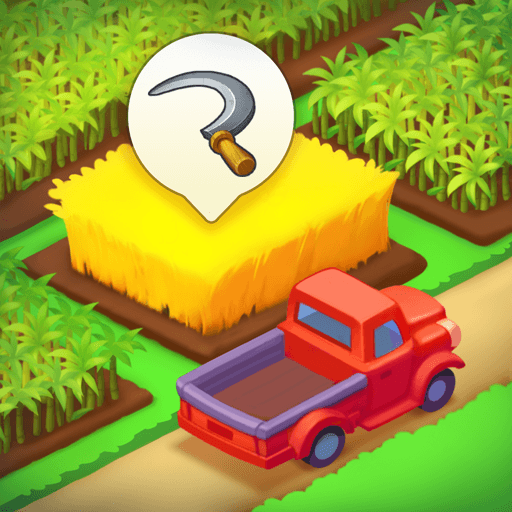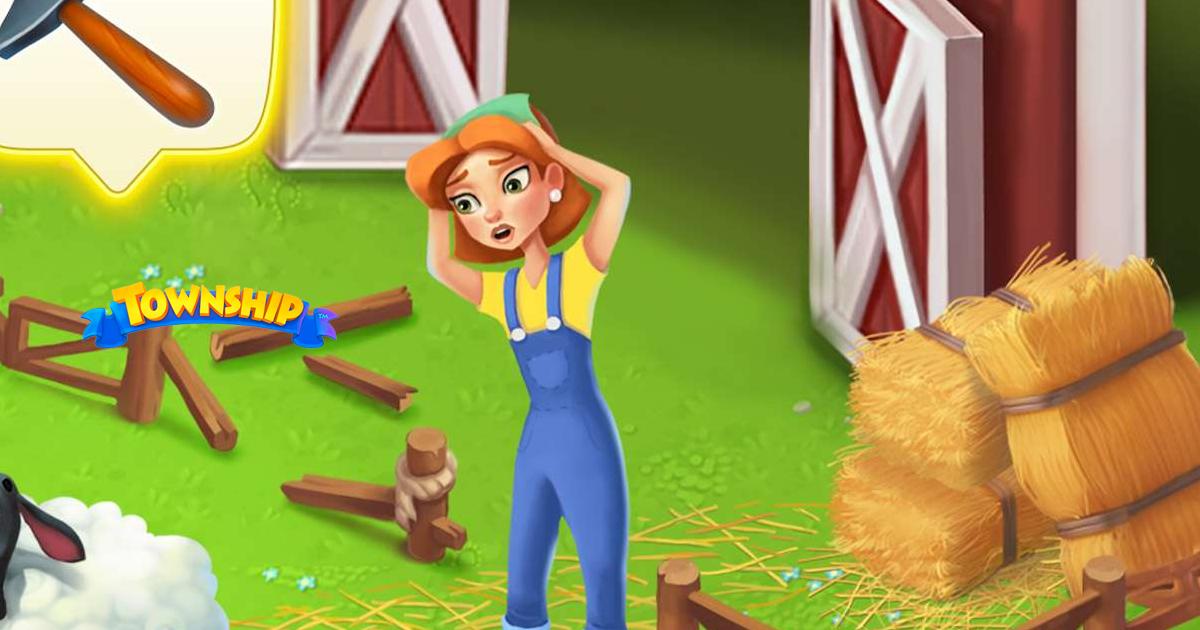Township Building Guide and Tips - The Best Tricks and Strategies for Developing Your Town

When it comes to developing your towns in Township, there are quite a few buildings to discover, as well as several elements to consider. And while, for the most part, you’ll do just fine by constructing buildings as they become available, it’s great to know the fundamentals in order to understand exactly what you need to do at all times.
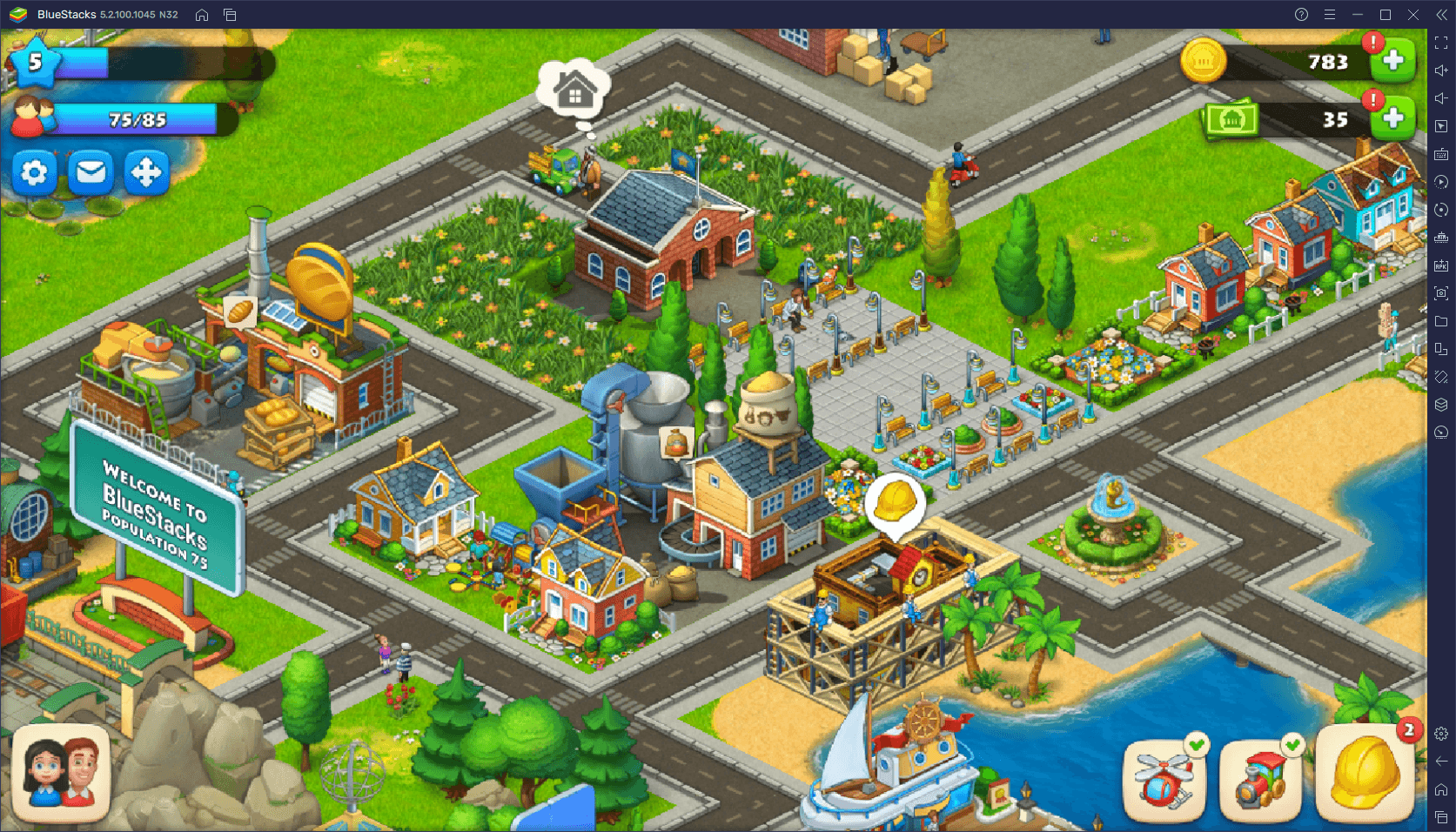
With that being said, in our beginner’s guide for Township, we talked about the most basic elements of the game that you need to know to get started on the right track. This time around, however, we’re going to delve a little bit deeper into the different types of buildings available in the game, as well as give a few tips on how to progress quickly and efficiently.
The Different Building Types
As we mentioned in our beginner’s guide, the buildings in Township are divided into different categories, and while we won’t get into the specifics of each and every structure in the game, you can find a brief overview of the importance of these buildings below:
- Houses: These buildings are exceedingly important as they’re the only way of increasing your population once your limit cap has been increased. In short, whenever you construct a new community building, and your population cap increases, the best way to bring more citizens to your town is by constructing houses. Citizens are important since they increase the limit of farming fields you can have at any given moment.
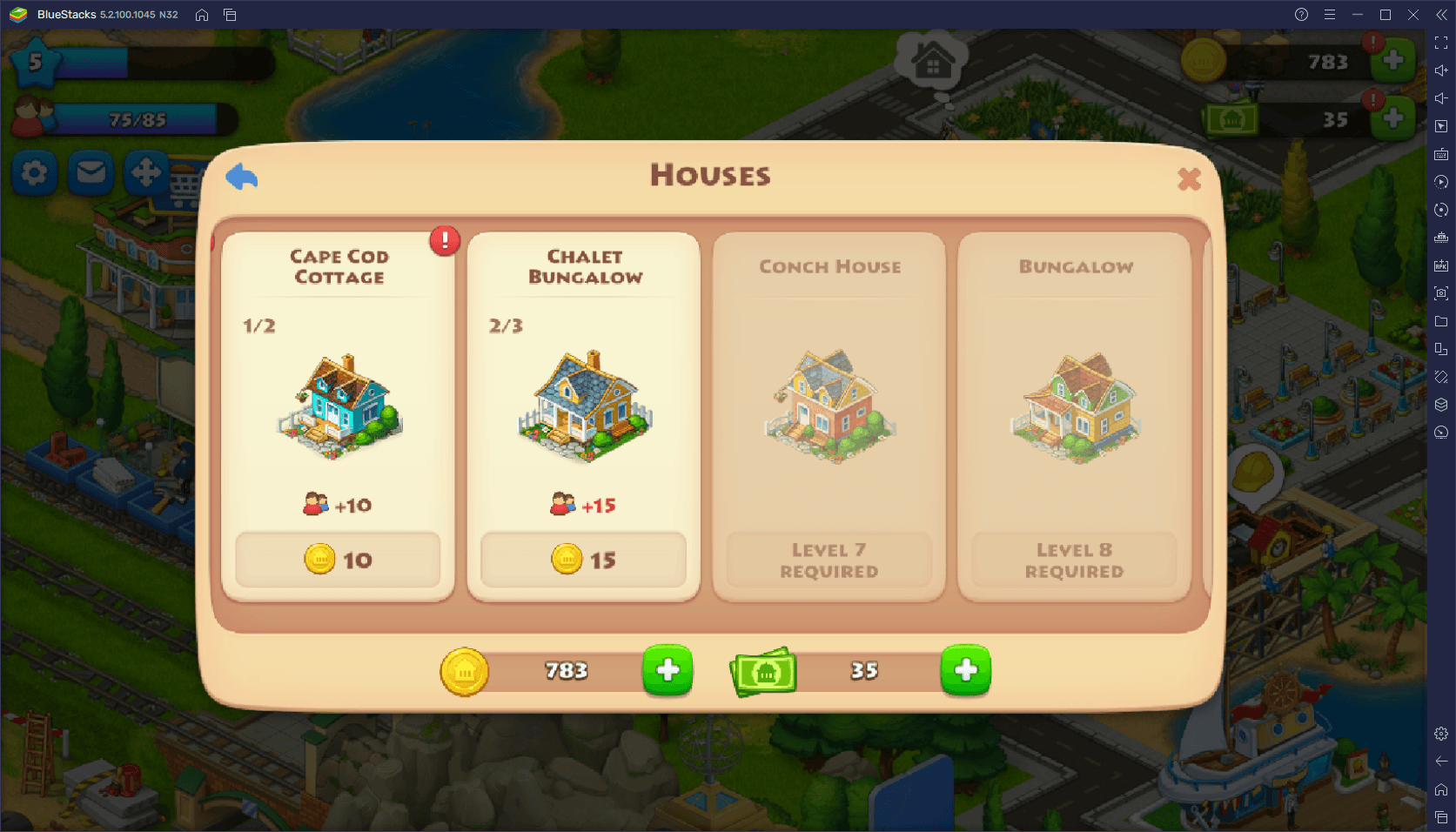
It’s worth pointing out here that the houses you unlock later on bring more citizens to your town, while the beginner homes only bring a few people.
- Community Buildings: These structures go hand in hand with the houses, as community buildings are the main way to increase your citizen cap. And as we mentioned above, having lots of villagers is important since they let you have more farming fields, which makes both community buildings and houses the most important structures in the game.
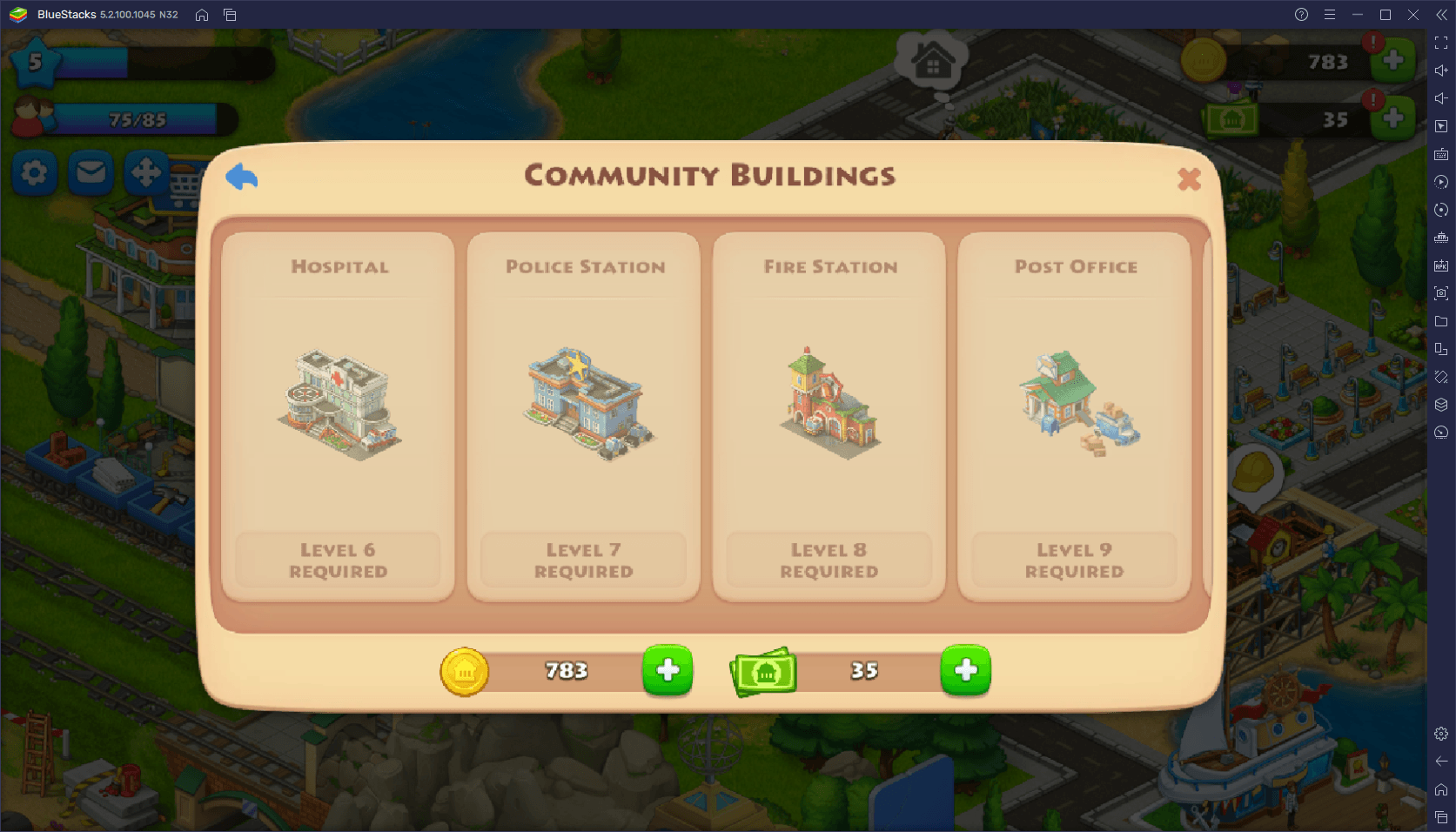
- Factories: These buildings are where you’ll take raw materials, like wheat and milk, and turn them into goods. These goods can then be turned in to complete villager requests in the town map, or can also be submitted in the train station in exchange for construction materials. However, keep in mind that some goods can require other goods in order to be produced, so it’s always worth it to keep a steady supply of low level products in storage in case you need to manufacture other goods.
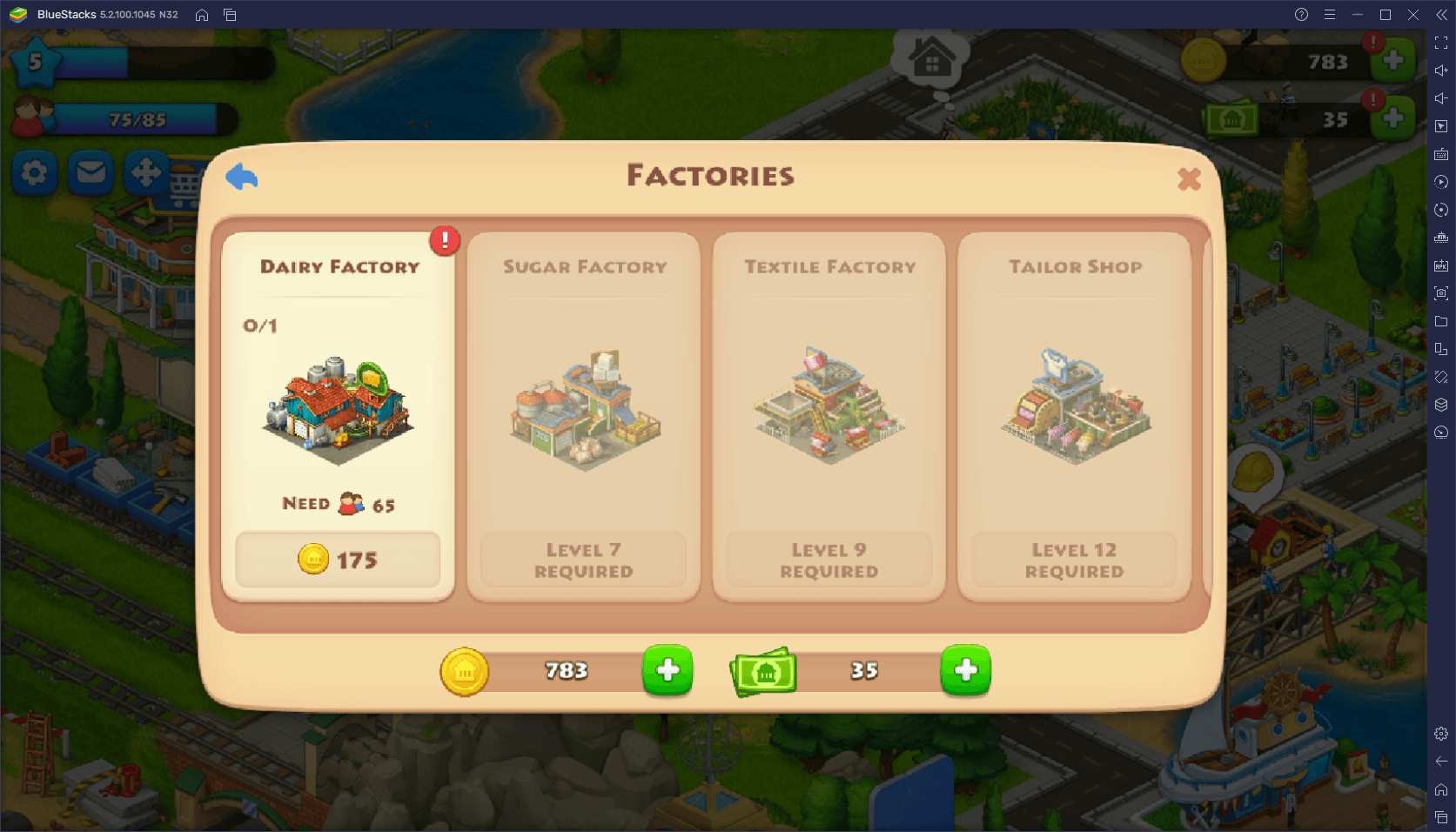
- Farming: As their name implies, these buildings mostly consist of structures where you produce raw materials. Buildings like fields, cowsheds, chicken coops, sheep and pig farms, and apiaries, among others, can be found in this section. Some of these buildings, however, require raw materials and other goods in order to function. For instance, cowsheds require cow feed if you want your cows to produce milk. This feed, on the other hand, is produced in the feed mill using corn and wheat. And just like with these two, there are many different buildings that synergize with each other, which means that you will only benefit from constructing everything as it becomes available.
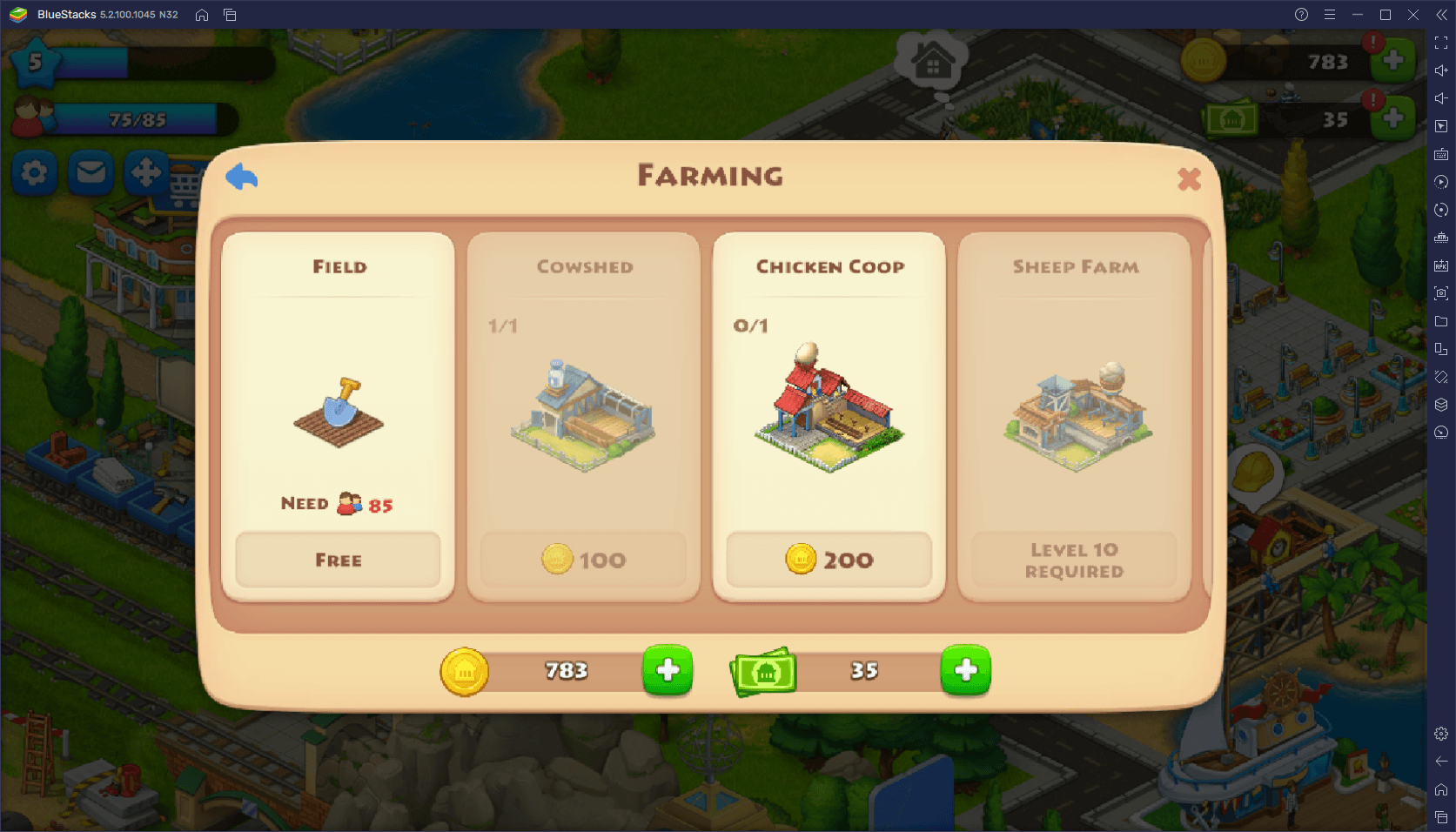
- Decorations: Buildings with no purpose other than to decorate your town. Once you’re fairly well off, you can invest surplus resources into decorations to give your town a unique flair. There are countless decorations from which to choose from, which you can mix and match to achieve different and fantastic results.
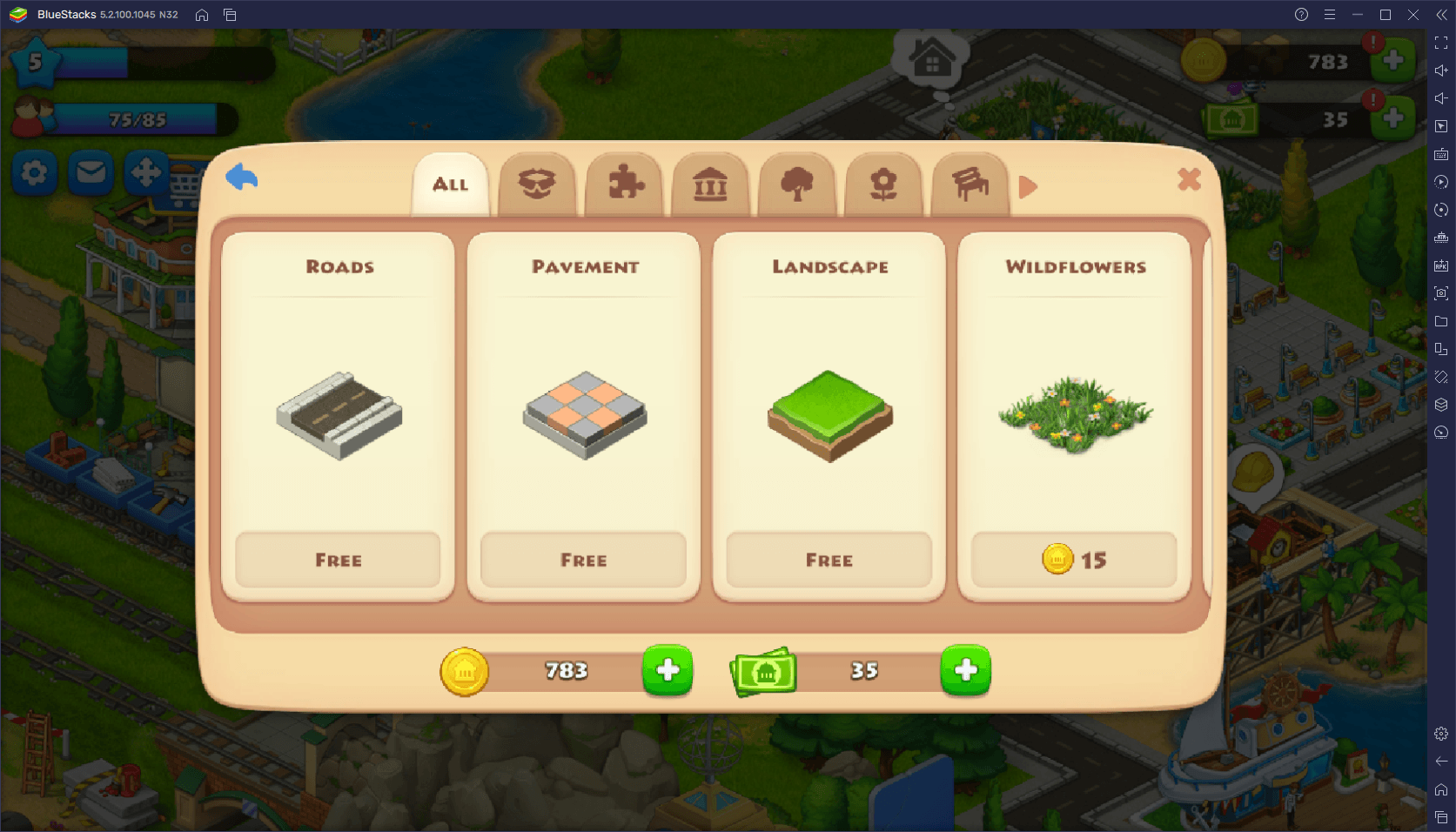
- Special: These structures become available at advanced levels, and can perform a variety of functions. From trading certain goods for others, or offering minigames with a chance to score awesome prizes, these special buildings are quite interesting and worth taking a look at once you unlock them.
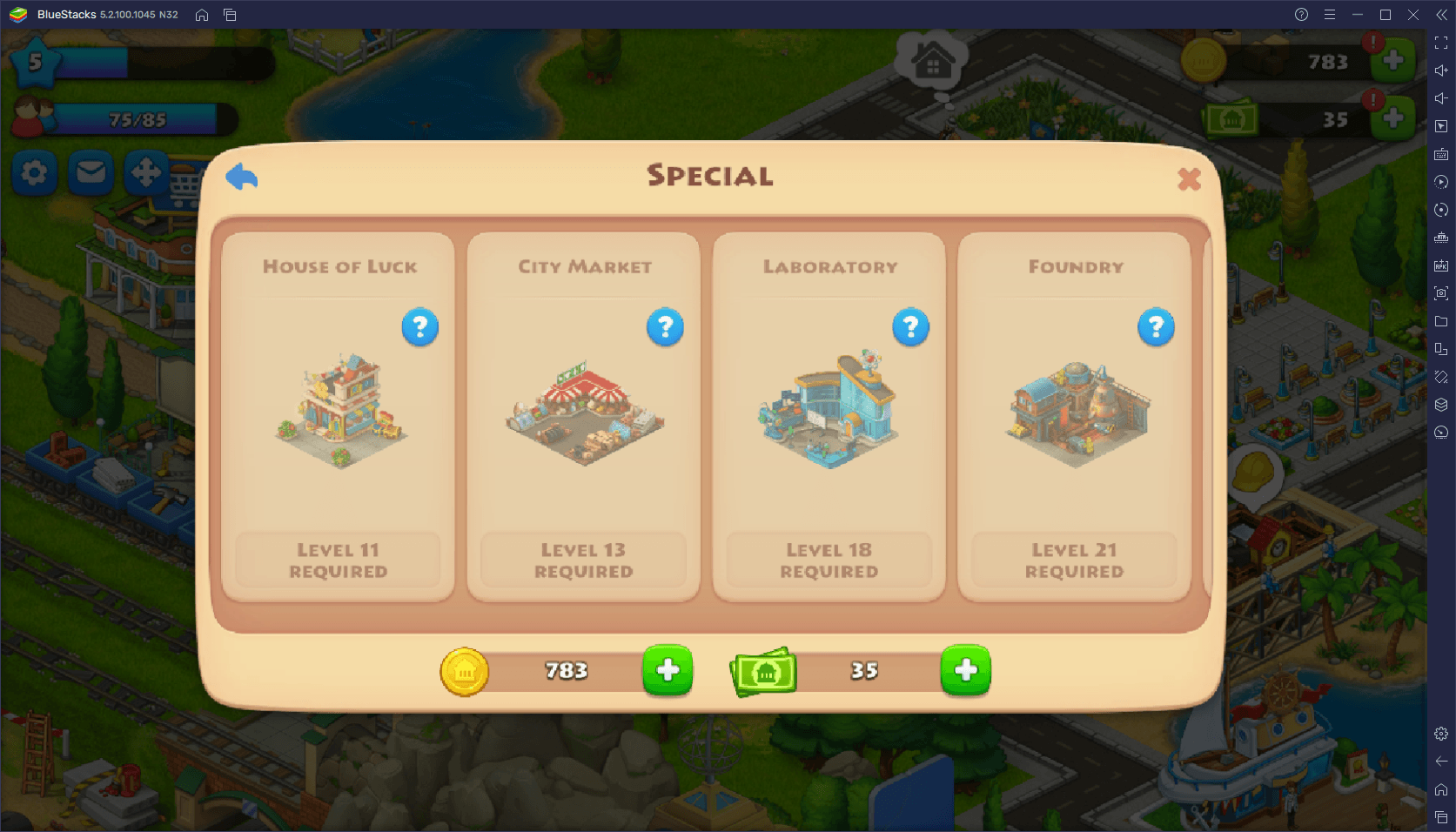
As you progress through the game, you’ll continuously discover new buildings, most of which can interact with others that previously exist in your town, or that require future buildings to function properly. Regardless, you should always construct new structures as they become available in order to diversify what your town has to offer, as well as to enable completion of all villager requests.
However, you should always give special priority to the houses and community buildings, as these will help to increase your citizen cap and population, which in turn will let you create more fields and produce more raw materials.
The Train Station
Once you reach level 5, you will unlock the Train Station. This building houses the titular train, which you can fill up with a number of requested materials and goods, in exchange for other important products.
Every few minutes, you’ll find that the train in the station will request a number of products, including both manufactured goods as well as raw materials. Whenever you fulfill an order in the train station, the train will depart and return after a few minutes with other valuable goods, including materials that are used in the construction of community buildings.
The train station is a vital part of the development of your town, as more often than not, what stops you from developing and constructing new community buildings is not your level, but your access to construction materials. In this sense, a good tip to progress efficiently in Township is to ALWAYS complete the train station requests ASAP.
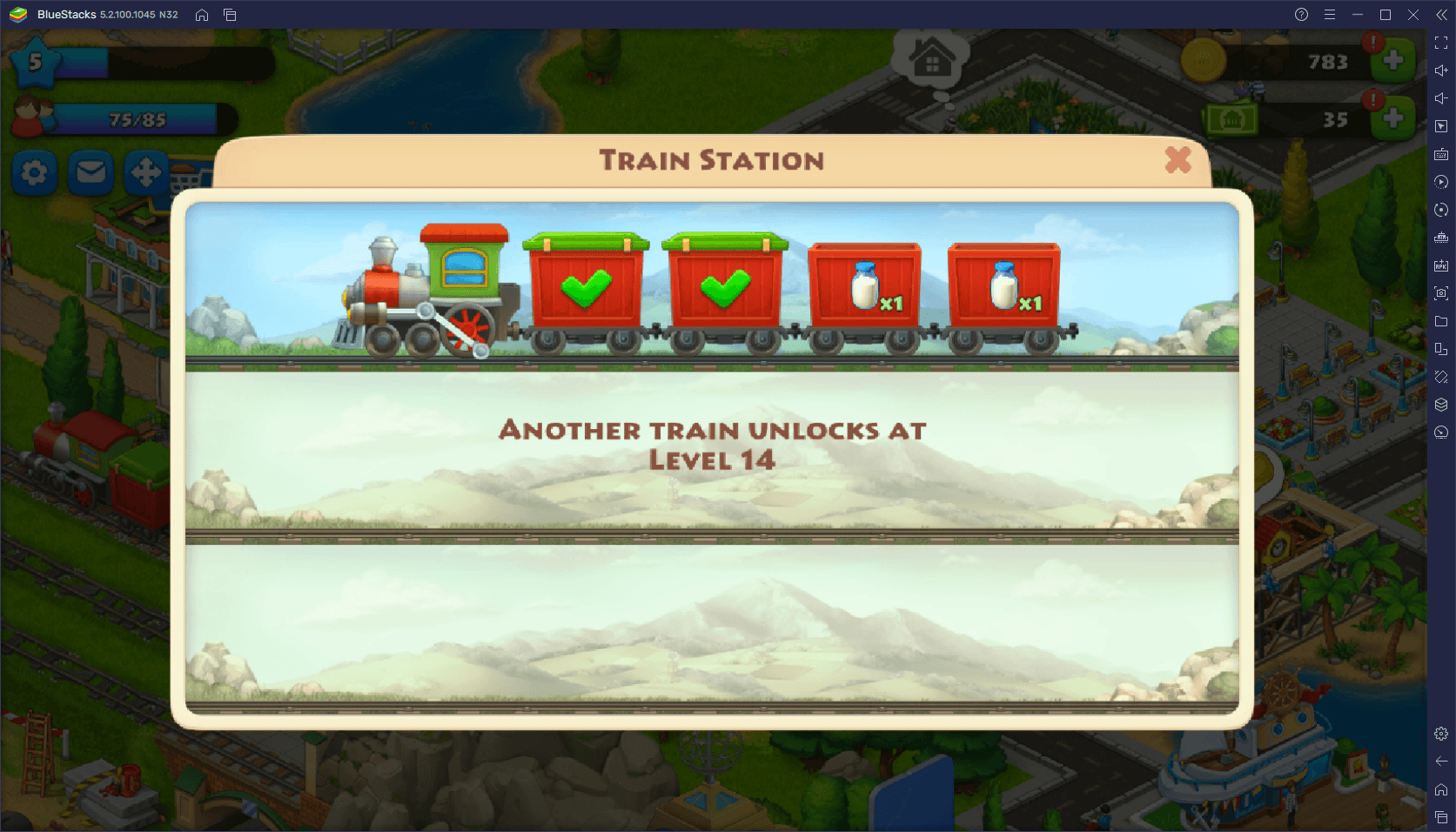
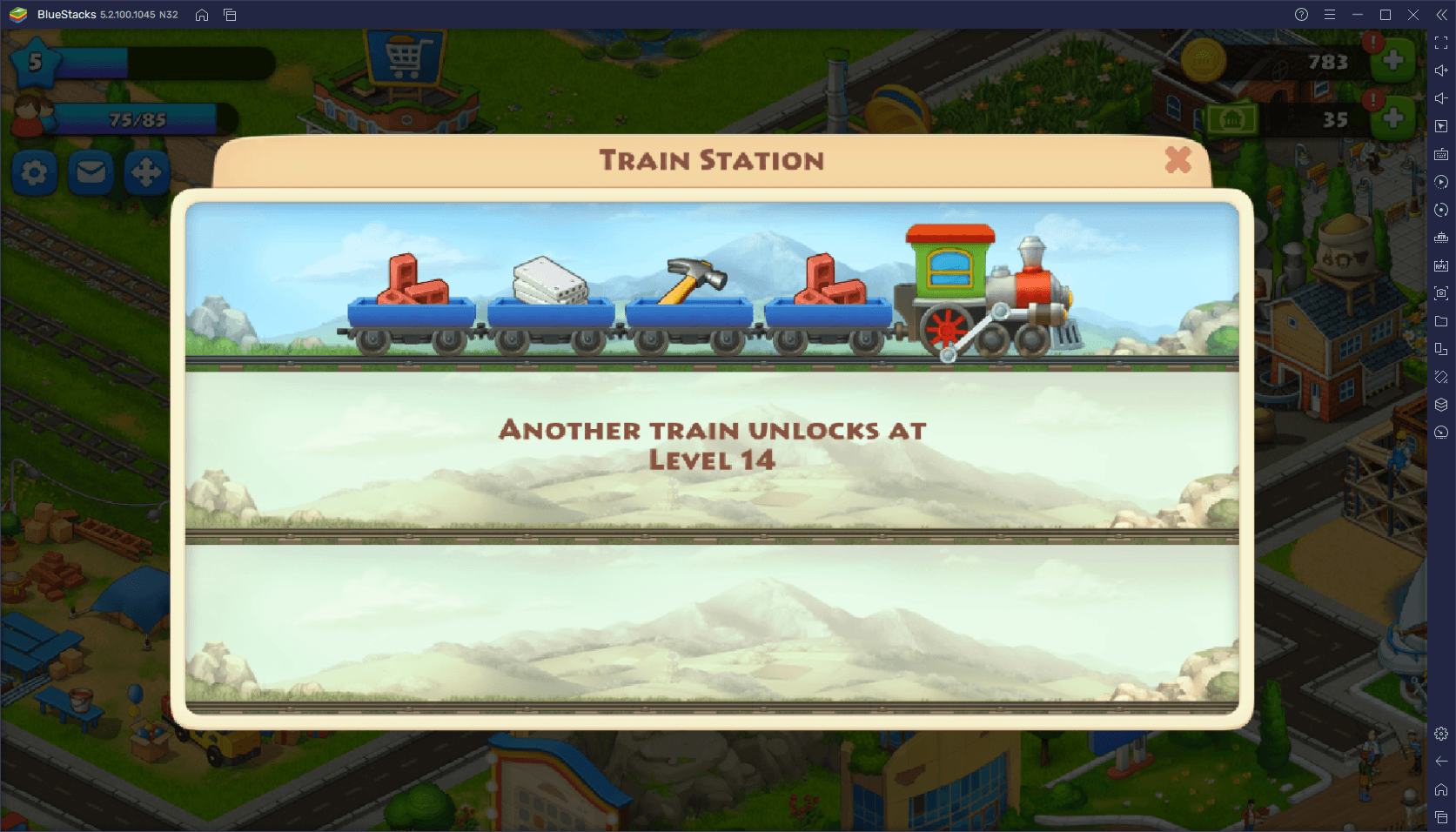
In other words, if you see a train waiting in the station, make sure to check up on its requests and fulfill it as soon as you can. This is in order to keep a steady supply of construction materials and other vital goods flowing into town.
Your Barn and its Contents
All the materials and goods that you produce don’t just magically go into a virtual bank; they are all stored in your barn. The practical upshot of this is that you don’t have to transport it manually, which is always a good thing. However, the capacity of your barn is quite limited, and will be one of the main factors that slows you down early on, considering that you’ll have to juggle different materials, selling what you don’t need, and always staying on top of using raw materials to produce goods so that you don’t run out of space.
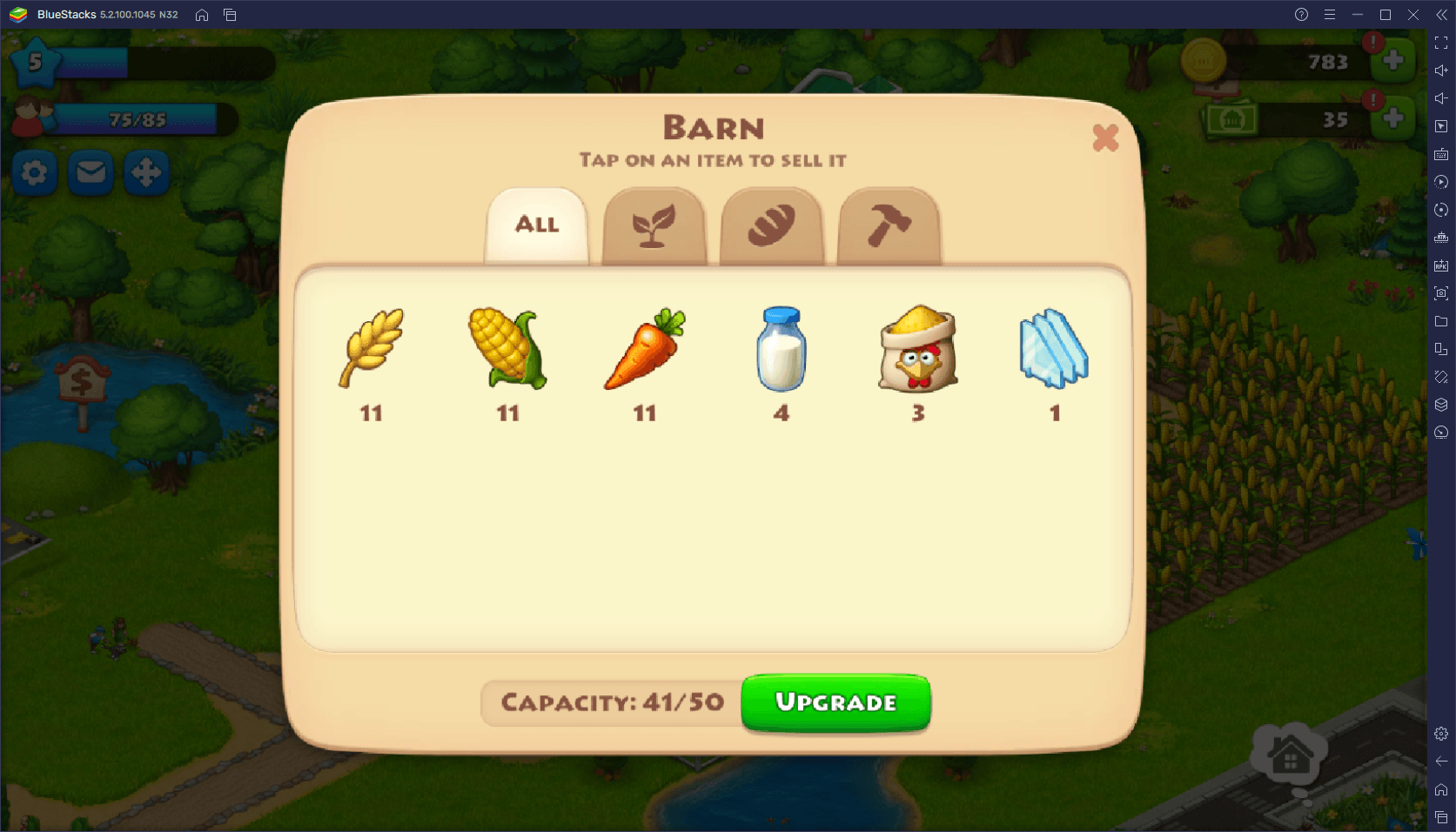
Fortunately, it’s possible to upgrade your barn fairly easily by using construction materials. The said materials are obtained from, you guessed it, completing train station requests. This is another reason as to why you should focus on fulfilling these orders whenever you can. In fact, upgrading your barn should be your first priority in Township as you’ll quickly run out of space if you’re playing actively.
Factories and Production Slots
To avoid overcapping on materials and filling up your barn, you should always keep your production buildings busy. As we mentioned above, these factories take raw materials or other products and turn them into something else. These manufactured goods can then be used for completing villager requests, for fulfilling train station shipments, or simply for selling for gold.
However, your production in factories is always limited by the number of slots available. This is true for most buildings, including even some farming structures like the cowshed. Luckily, just like with the barn, you can expand the production slots of these buildings by using cash, which is the game’s premium currency.
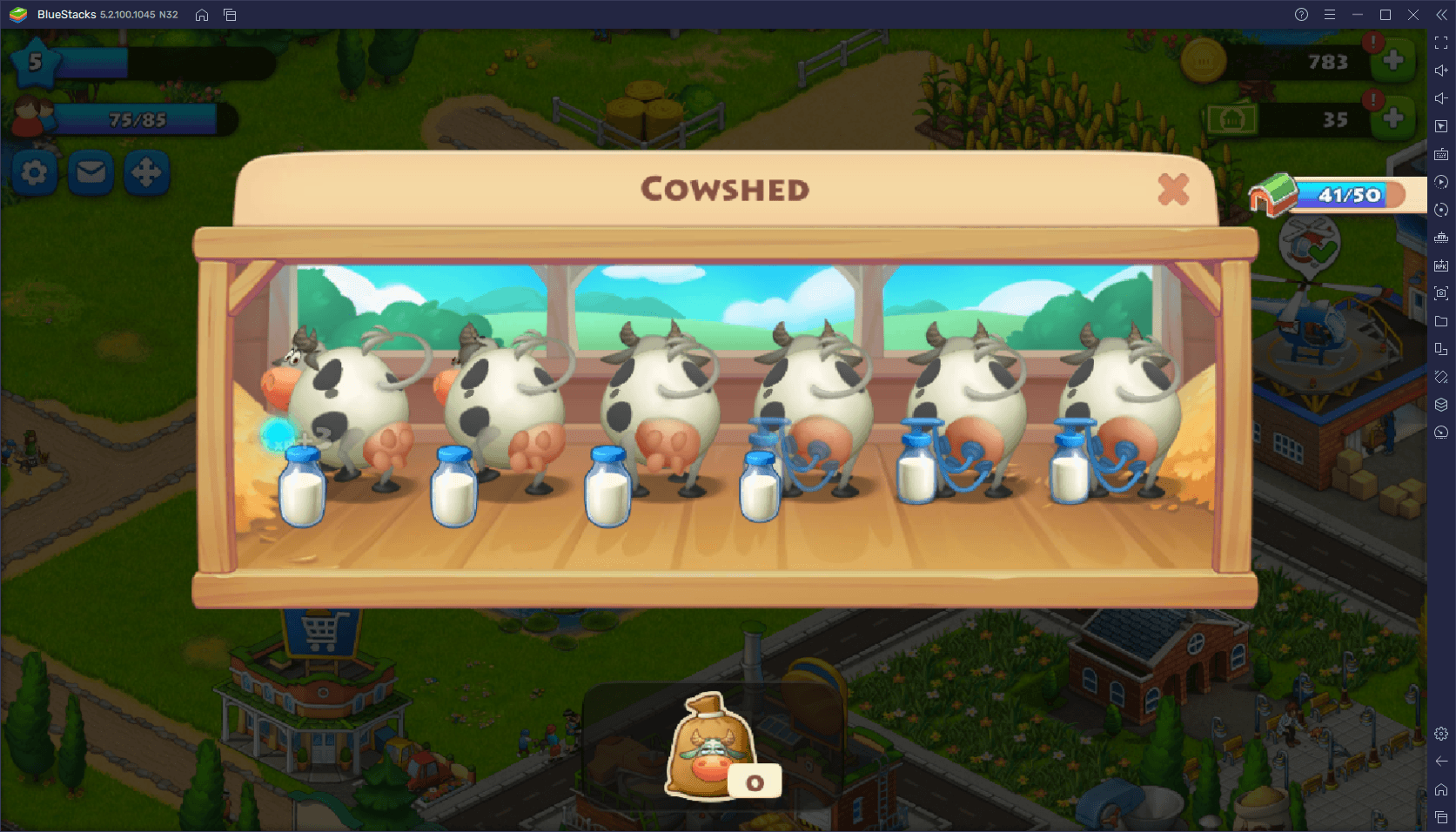
While you get a very limited amount of this currency by completing certain tasks and achieving certain milestones, we always recommend using it to expand the production slots of the most important buildings. For instance, milk is necessary for many products, so we always recommend purchasing all 6 slots in the cowshed ASAP. Similarly, animal feed is also crucial for the production of certain raw materials, so you could benefit greatly from purchasing extra slots in the feed mill.
By playing around with your factories and farming buildings, and checking out what your bottlenecks are, you can maximize your production by unlocking additional production slots in the corresponding buildings. Just remember that cash, the premium currency in Township, is very limited as a free to play player, so don’t just spend it on the first building that catches your eye.
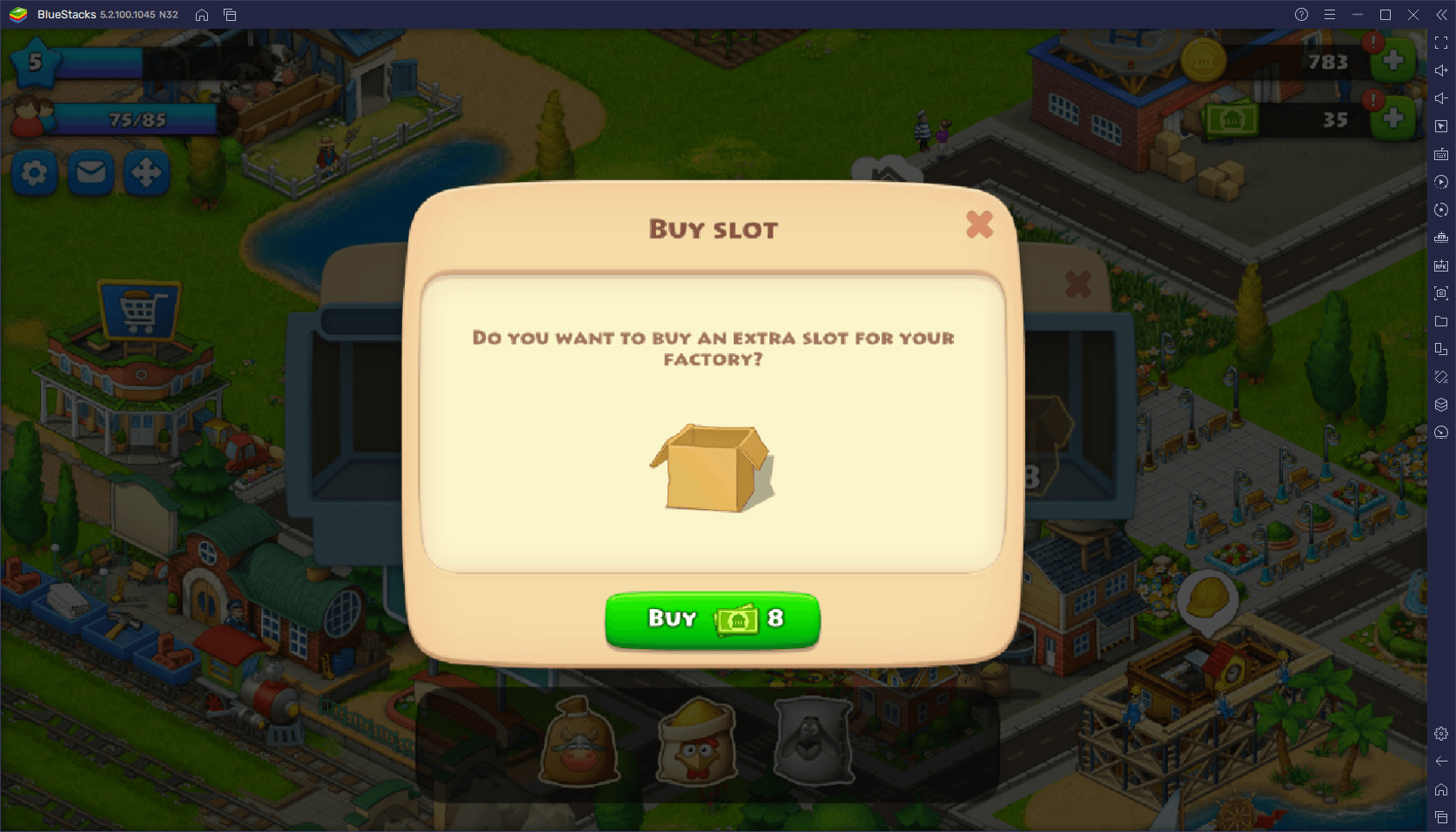
With that being, that’s basically all you need to know in order to progress effectively in Township. As you continue to level up, you’ll unlock new buildings and get access to other products. As long as you examine these buildings closely and learn how they interact with each other, you’ll know exactly how to assign your resources to ensure a constant and consistent production.
Township is a fairly straightforward game that doesn’t really require vast time commitments nor to read extensive wikis in order to learn about all its aspects. Nevertheless, with the wealth of knowledge that we’ve shared in this guide, you hopefully have a better understanding of the game’s essential aspects, as we as how to proceed at all times.

